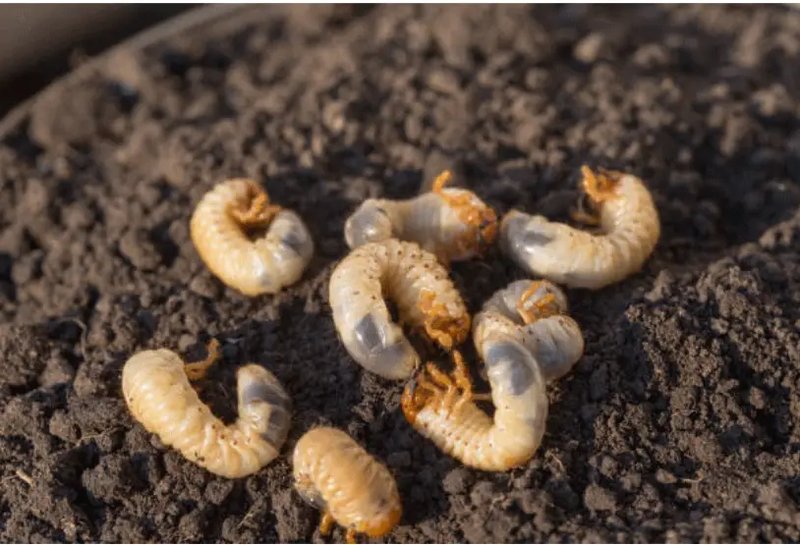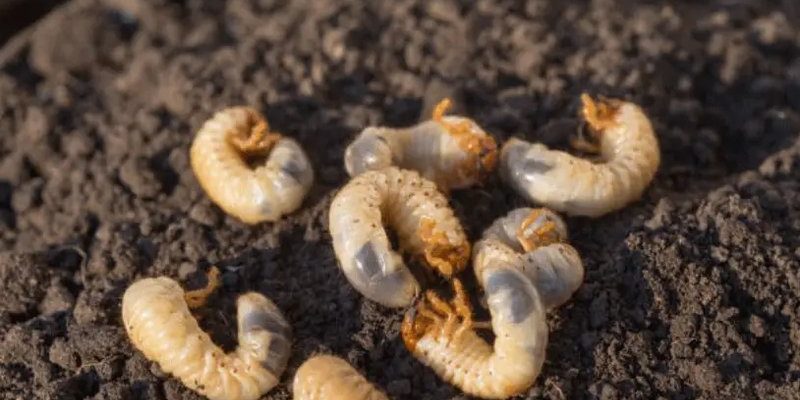
Using grub worms as animal feed is gaining traction, especially as the world looks for more sustainable and eco-friendly alternatives. They grow quickly, require less land, and can be produced with a fraction of the resources needed for conventional animal feed. In this article, we’ll dive deeper into the fascinating world of grub worm farming, exploring why they’re an excellent choice for animal feed, how they can be farmed, and what benefits they bring to the table (or barn!).
What Are Grub Worms?
Grub worms are the larval stage of various beetle species. Most commonly known types include mealworms and black soldier fly larvae. These worms are often found in soil, making them a natural part of many ecosystems. Grubs are rich in protein and fat, which makes them a favorable choice for animal feed. Think of them as nature’s energy bars!
Why should we care about grub worms? Well, they play a crucial role in breaking down organic matter in the soil. They help in recycling nutrients, which benefits plant growth. Plus, they are an underutilized resource in the animal feed industry. Instead of letting them go to waste, farming them could contribute significantly to sustainable agriculture.
As they grow, grub worms digest organic waste, turning it into valuable nutrients. This not only helps in reducing waste but also creates a product that’s healthy for animals. Isn’t it amazing how something so simple can have such a big impact?
Why Farm Grub Worms as Animal Feed?
You might be wondering why grub worms are making waves in the animal nutrition world. One of the biggest reasons is their **nutritional value**. Grubs are packed with protein—often more than traditional feed sources. In fact, black soldier fly larvae can contain up to 45% protein, offering a high-energy option for livestock.
Another reason is their ability to thrive on organic waste. Instead of relying on resources that require extensive land and water, grub worms can be raised on food scraps or agricultural byproducts. This not only reduces waste but also lowers the carbon footprint associated with animal feed production. Basically, they are eco-friendly superheroes!
Farming grub worms also has economic advantages. With rising feed costs, many farmers are looking for alternative solutions. Grub farming can be done on a small scale or integrated into existing farming practices. It’s a versatile option that doesn’t require huge investments, making it accessible for various farmers.
How Do You Farm Grub Worms?
Farming grub worms might sound daunting, but it’s actually quite straightforward. Here’s a simple breakdown of the process:
- Choosing the Grub Type: Decide which grub worm you want to farm. Black soldier fly larvae and mealworms are popular choices due to their growth rates and nutritional value.
- Set Up a Suitable Environment: Grubs need warmth and moisture. A plastic bin with proper ventilation works well. Make sure it’s kept in a warm area but out of direct sunlight.
- Feeding the Grubs: They thrive on organic waste, so you can feed them kitchen scraps like fruits and vegetables, or grains. Just be sure to avoid anything too fatty or moldy!
- Harvesting: After a few weeks, depending on the type, the grubs will be ready for harvest. You can separate them from waste and use them as animal feed.
The beauty of this process is that it not only produces a nutritious feed source but also helps in composting organic matter. It’s like a win-win situation where both the farmer and the environment benefit!
Benefits of Using Grub Worms as Animal Feed
Switching to grub worms as an animal feed source offers several benefits for farmers and animals alike.
First off, the **nutritional boost** is significant. Grub worms provide high-quality protein and essential fatty acids, which can lead to better growth rates and health in livestock. It’s like upgrading your pet’s food for a healthier, happier life!
Furthermore, using grubs helps reduce feed costs. Traditional animal feed prices can fluctuate, affecting a farmer’s bottom line. Grub worms grow rapidly and can be produced almost anywhere, providing a stable, less expensive option.
Lastly, there’s the environmental impact. By farming grub worms, farmers can help reduce waste and recycle nutrients. This contributes to sustainability in farming, which is a growing concern as our planet faces various ecological challenges.
Challenges in Grub Worm Farming
While farming grub worms sounds fantastic, it does come with its own set of challenges. Let’s face it—nothing is perfect!
One challenge is **scalability**. For those looking to produce grub worms on a massive scale, it can require more sophisticated setups. You need to ensure the right conditions for growth, which might involve additional costs and technology.
Another issue is the initial **learning curve**. If you’re new to this, there may be some trial and error involved. It’s essential to research and possibly connect with others already farming grubs to avoid common pitfalls.
Lastly, there’s the **market acceptance**. While grub worms are gaining popularity, it might take time for some farmers to fully embrace this change. Education and awareness are key to overcoming this hurdle.
Comparing Grub Worms with Other Feed Sources
When you compare grub worms to traditional animal feed sources, the differences are stark. Here’s a quick rundown:
– **Nutritional Value**: Grub worms typically provide higher protein content with essential fatty acids. For example, while many grains offer decent protein levels, they often lack the balanced nutrient profile that grub worms provide.
– **Environmental Impact**: Traditional feed crops like corn and soybeans require large amounts of water, land, and pesticides. In contrast, grub worms can thrive on waste and have a smaller carbon footprint.
– **Cost Efficiency**: Farming grub worms can be less expensive over time since they require fewer resources to produce when compared to conventional feed crops.
While each feed option has its pros and cons, the growing interest in grub worms reflects a shift towards more sustainable and innovative farming practices.
The Future of Grub Worm Farming
Looking ahead, the future of grub worm farming as animal feed appears bright. With the urgent need for sustainable food sources, researchers and farmers are exploring ways to scale up production and improve methods.
Innovations in farming techniques could lead to more efficient systems that make grub farming even more accessible. Plus, as awareness grows around the benefits of using grub worms, we may see an increase in demand from the agricultural sector.
Trying out grub worms not only stands to benefit individual farmers but could also contribute to the broader movement towards sustainable food systems. By embracing these little powerhouses, we can help ensure a more resilient food future for everyone.
In conclusion, grub worms indeed hold promise as an alternative source of animal feed. They’re nutrient-rich, environmentally friendly, and offer a practical solution to some of the challenges faced in traditional animal feed production. As we continue to seek innovative and sustainable agricultural practices, it’s clear that grub worms have a place at the table—quite literally!

